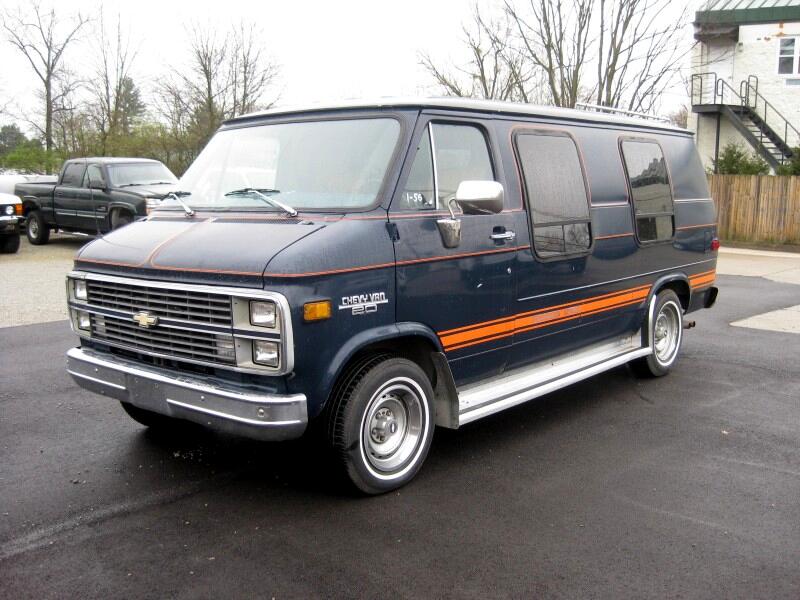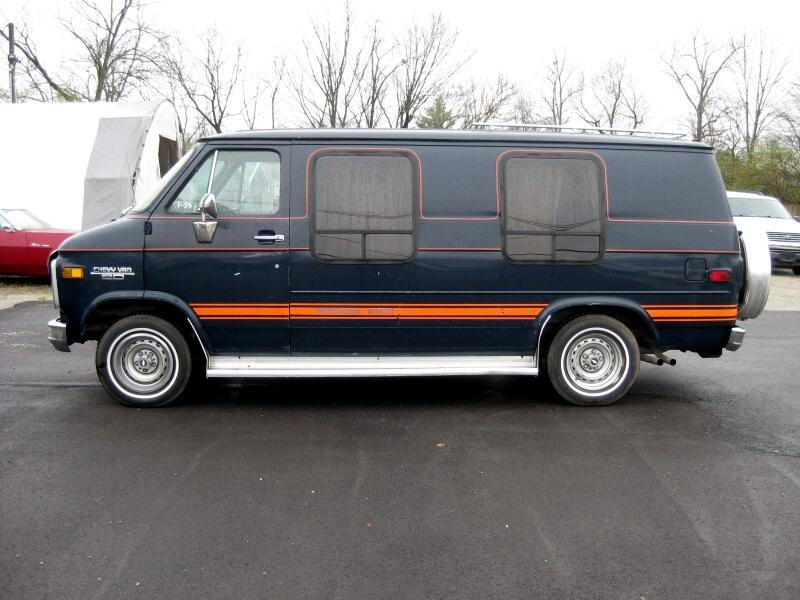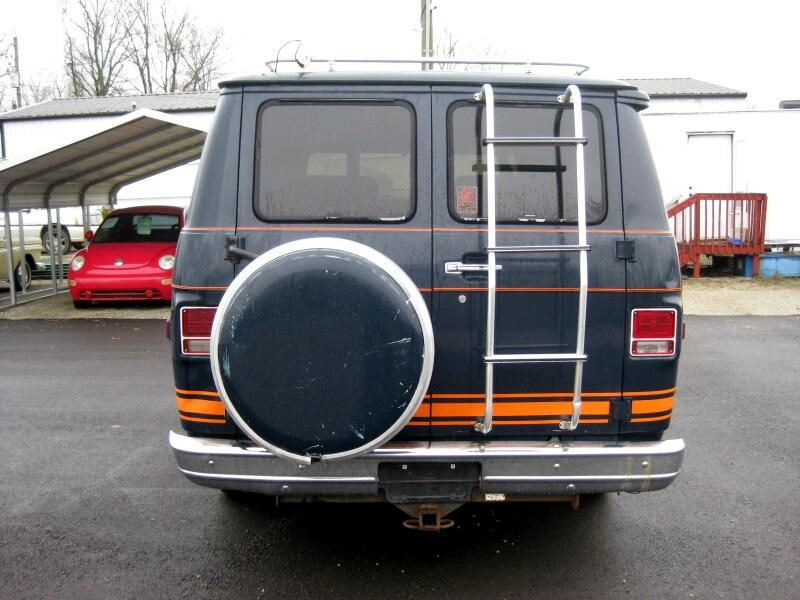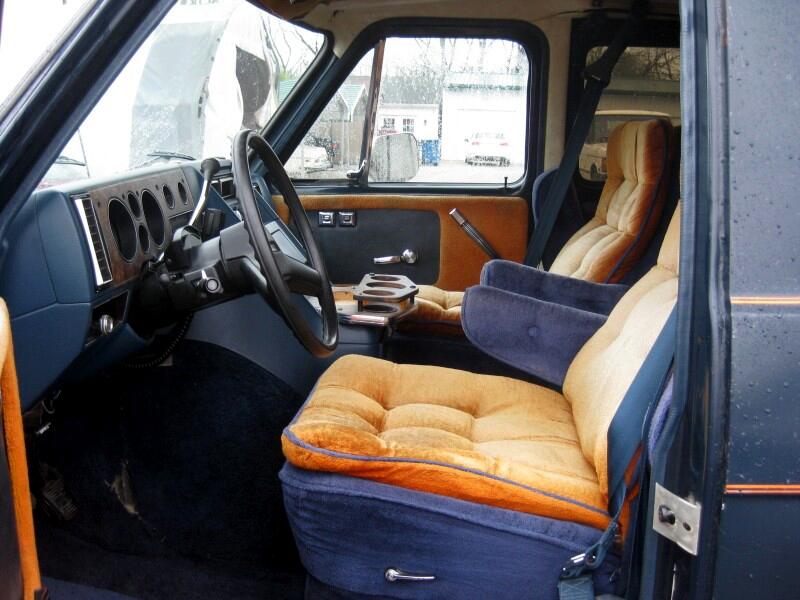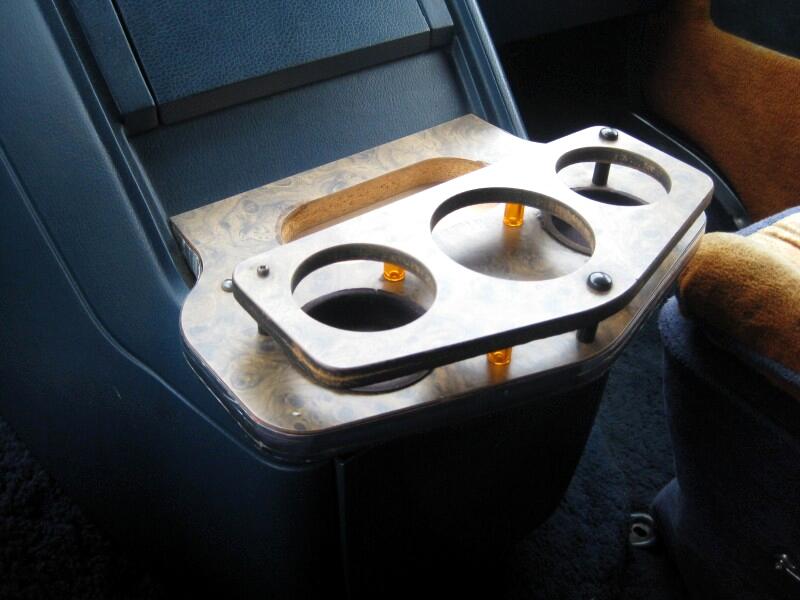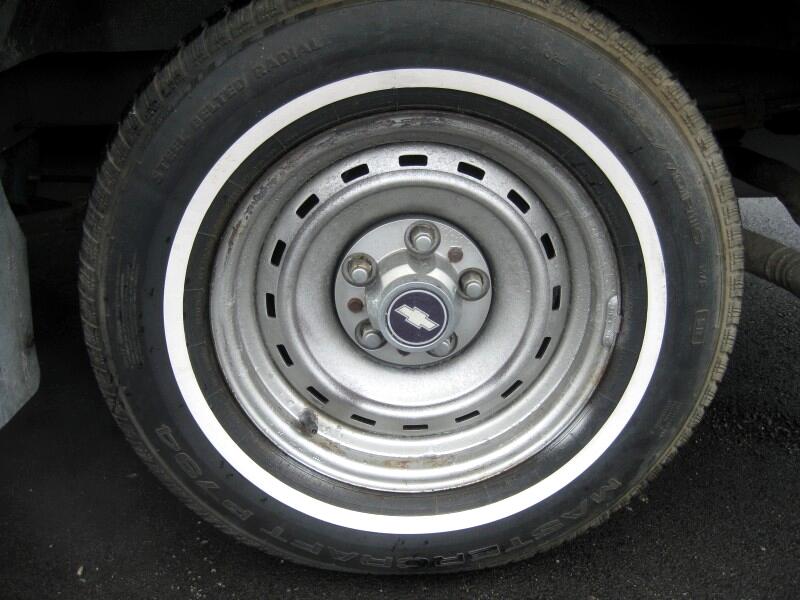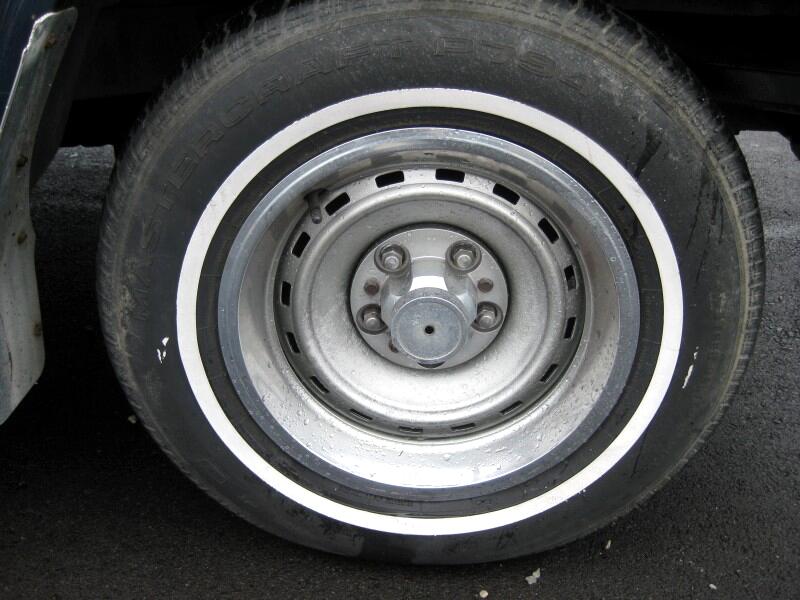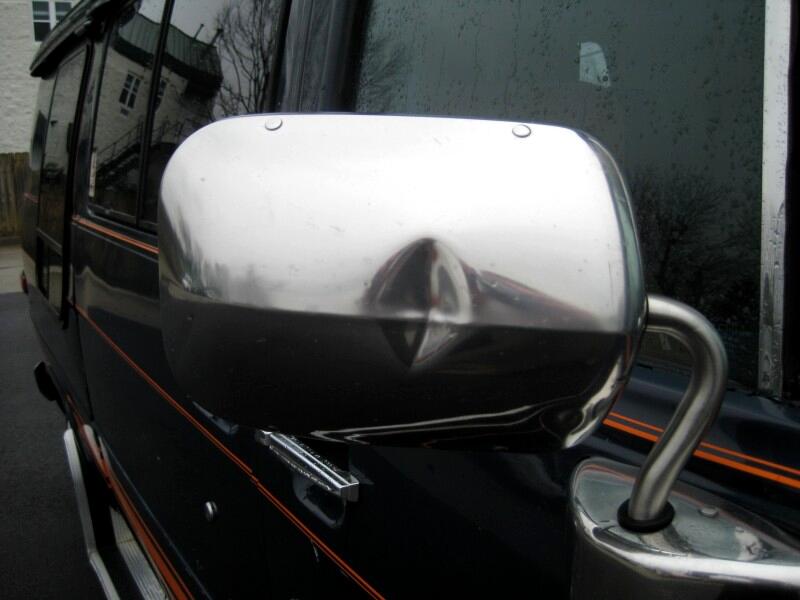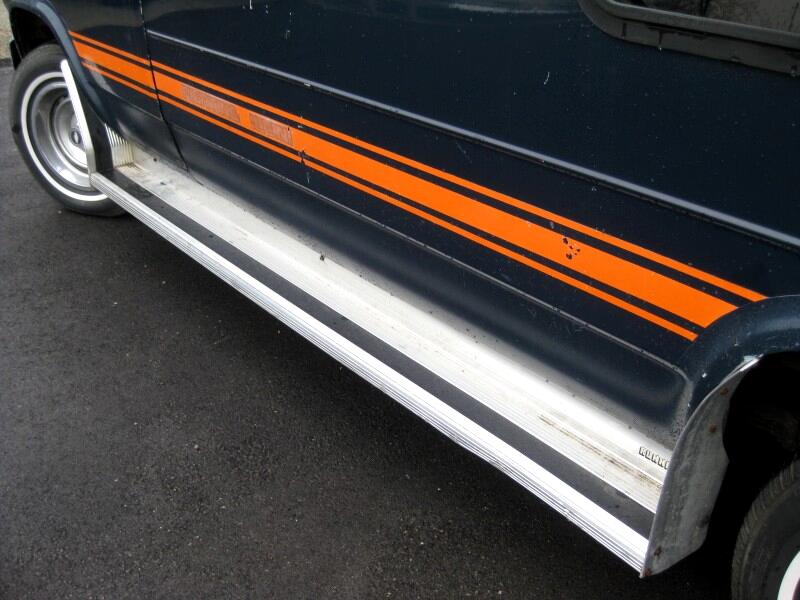Runs Good - Custom Van
$7,995
502-645-8045
Vehicle Options
Vehicle Description
No accidents, conversion van, in good condition, 5.0L V8, Fighting Illini colors, runs and drives good.
At Schurr Auto Sales we are proud of the quality of our selection and our dedication to serve the needs of our customers. This is reflected in the amount of repeat business we receive. Whether this is your first purchase with us or one of many that you’ve had, you can count on our dedicated sales staff to make it the best buying experience possible. *Visit us online at www.schurrauto.com to see more pictures of this vehicle or call us at 502-645-8045 to schedule your test drive today. We work with several lenders to help find you financing. Please note that we are not a Buy Here Pay Here lot, all loans are facilitated through affiliate lenders or your own financing. Schurr Auto is proud to serve Louisville and its surrounding areas. We are here to assist you in obtaining a previously owned vehicle that suits your needs and lifestyle. Come on out to the best kept secret in KY, Schurr Auto - Fair & Friendly
In April 1970,[citation needed] GM introduced the third-generation G-series vans as 1971 model-year vehicles. In a complete redesign of the model line, the vans adopted a front-engine configuration (adding a hood to the body[1]). While using a unibody chassis, the third-generation vans derived mechanical components from the second- and third-generation C/K pickup trucks.
Initial advertising in 1970 emphasized interior space, with the tagline "Chevrolet launches the space vehicle." It is a nod to the U.S. space program, with the vehicle appearing vertically on page, imitating a rocket launch.[2]
In production for 25 years, the third-generation G-series vans became one of the longest-produced vehicle platforms designed by General Motors.
Chassis
In line with the two previous generations, the third-generation G-series vans again used unibody construction, integrating the frame rails into the floorpan; the side panels were constructed of a single-piece stamping.[3] The model line was offered three wheelbase lengths: 110 inches, 125 inches, and 146 inches. From 1971 to 1989, the 146-inch wheelbase was used for cutaway chassis; for 1990, a single-rear-wheel version was introduced for an extended-length van body.[4]
The front suspension underwent an extensive design change, deleting its leaf-sprung front axle; in line with C-series pickup trucks, the vans received independent front suspension with coil springs and control arms (allowing for much wider spacing of the front wheels[3][1]). The rear axle suspension largely remained the same, retaining a leaf-sprung solid rear axle.
The four-wheel drum brakes of the previous generation were abandoned, as the third-generation G-series vans adopted front disc brakes.[5][6] The front disc/rear drum configuration remained unchanged throughout the entire production of the model line; heavier-duty vehicles received larger brakes.[4] For 1993, four-wheel anti-lock braking was added as a standard feature.
Powertrain
For its 1971 introduction, the G-series model line was offered with three different engines.[1] A 250 cubic-inch inline-6 and two V8 engines were offered. On the 1/2-ton vehicles, a 307 cubic-inch V8 was optional, with a 350 cubic-inch V8 offered as an option on 3/4-ton and 1-ton vans. Alongside a 3-speed manual transmission, the 2-speed Powerglide was offered alongside the 3-speed Turbo-Hydromatic automatic.[1] After 1972, the Powerglide automatic was dropped.
For 1974, the 307 was discontinued, replaced by a two-barrel 350 V8 in 1/2-ton vans.[7] For 1976, the powertrain line was expanded, with the 292 inline-6 becoming the standard engine in 3/4-ton and 1-ton vans; a 305 V8 replaced the 350 two-barrel in 1/2-ton vans (becoming an option for both 1/2-ton and 3/4-ton vans in 1981) and a 400 cubic-inch V8 became offered in 3/4 and 1-ton vans.[8]
As part of the 1978 model update, the powertrain line underwent further revisions, with the 292 six dropped from G-series vans entirely; GM began the use of metric displacement figures.[9] In line with its use in the C/K trucks, the 400 V8 was dropped from the G-series for 1981.[10]
For 1982, a 6.2 L V8 became the first diesel engine option offered in the (3/4-ton and 1-ton) G-series. Shared with the C/K pickup trucks, an overdrive version of the Turbo-Hydramatic was introduced, adding a fourth gear.
In line with the C/K pickup trucks, a 4.3L V6 replaced the long-running 4.1L inline-6 as the standard engine for 1985. For 1987, the four-barrel carburetor for the V6 was replaced by throttle-body fuel injection (TBI), with the 5.0L and 5.7L V8s following suit. Alongside three-speed and four-speed manual transmissions, the G-series vans were offered with three-speed and four-speed automatic transmissions.[11]
For 1988, a fuel-injected 7.4L V8 was introduced as an option for the 3500 series,[12] becoming the first big-block V8 offered for the model line. For 1990, manual transmissions were discontinued and the four-speed automatic became standard equipment on nearly all body configurations;[4] for 1992, the 4L60E and 4L80E four-speed automatics replaced the three-speed automatics entirely.
While the gasoline engine offerings would remain largely unchanged after the 1988 model year, the 6.2 L diesel was enlarged to 6.5 L for 1994, with only a naturally-aspirated version offered for the G-series vans.
For 1996, offered only as a 1-ton G30 payload series, the "G-Classic" van continued the use of non-Vortec engines.[13] The 5.7L V8 was now standard (dropping the 5.0L altogether), with the 4.3L V6 as an option only on standard-wheelbase vans. The 7.4L V8 and 6.5L diesel V8 remained options.
Engine Engine family Production Notes
250 cu in (4.1 L) inline-6 Chevrolet straight-6 1971–1984 Initial standard engine on all payload series
262 cu in (4.3 L) V6 Chevrolet 90° V6 1985–1996 Replaced 4.1L I6 as standard engine
292 cu in (4.8 L) inline-6 Chevrolet straight-6 1975–1978 Replaced 250 I6 as standard engine on 3/4-ton and 1-ton vans
305 cu in (5.0 L) V8 Chevrolet small-block V8 1976–1995 Replaced 350 2bbl in 1/2-ton vans
Optional on 1/2-ton and 3/4-ton vans from 1981 to 1995
307 cu in (5.0 L) V8 Chevrolet small-block V8 1971–1973 Optional on 1/2-ton vans
350 cu in (5.7 L) V8 Chevrolet small-block V8 1971–1996 Optional on all payload series
2-bbl version replaced 307 in 1/2-ton vans[7]
379 cu in (6.2 L) V8 diesel Detroit Diesel V8 1982–1993 Optional on 3/4-ton and 1-ton vans
Naturally-aspirated version only
395 cu in (6.5 L) V8 diesel 1994–1996
400 cu in (6.6 L) V8 Chevrolet small-block V8 1976–1980 Optional in 3/4-ton and 1-ton vans
454 cu in (7.4 L) V8 Chevrolet big-block V8
(Mark IV)
1988–1996 First "big-block" V8 engine in G-series van
Optional for 1-ton vans and cutaway-cab chassis[12]
Body
In line with the C/K pickup trucks, the G-series vans were sold in 1/2-ton, 3/4-ton, and 1-ton series by both Chevrolet and GMC, with both divisions marketing passenger and cargo vans. As part of the shift to a front-engine design layout, the body received a conventional hood, allowing for access to the engine from outside of the vehicle.[1]
Prior to 1995, the G-series cargo van was sold with only a driver's seat (with an optional passenger-side seat).[14] Through its production, passenger vans were sold in multiple seating configurations (dependent on wheelbase), ranging from 5 to 15 passengers.[14] Alongside a windowless rear body, the cargo van was offered in several window configurations.[15]
1971–1977
1971 Chevrolet G20 (recreational vehicle)
1977 Chevrolet G20 (customized)
The G-series vans differed from one another in divisional badging. Alongside fender badging, Chevrolet badging was centered within the grille while GMC lettering was placed on the hood above the grille. In contrast to the "Action-Line" pickup trucks, the vans are fitted with a horizontal-slat grille. Sharing mechanical commonality with the "Action-Line" pickup trucks, the steering column was sourced from the 1969 update of the C/K series; a large engine cover required a separate design for the dashboard.
For 1973, a minor revision changed the color of the Chevrolet "bowtie" emblem from blue to gold.
For 1974, the steering column and dashboard were updated (to more closely match the introduction of the "Rounded-Line" C/K pickup trucks).
For 1976, the rear bench seats were redesigned in passenger vans, allowing them to be removed without tools.[16]
For 1977, a horizontal body line was introduced past the front doors, while fender and rear door badging were updated to match the design of the C/K pickup trucks.
Offered on a longer wheelbase, a cutaway-chassis conversion of the G-series was marketed through Chevrolet and GMC as a cargo truck, as the Hi-Cube Van and MagnaVan, respectively.
1978–1982
1978–1982 GMC Vandura (110-inch wheelbase)
For 1978, the exterior underwent a revision; along with minor changes to the fenders and the introduction of larger bumpers, the grille was redesigned. More closely matching the "Rounded-Line" C/K pickup trucks in its design, the front fascia was restyled to integrate the headlamps and turn signals into one housing; lower-trim vehicles were offered with round headlamps with square headlamps fitted to higher-trim models. The dashboard was redesigned with recessed gauge pods and an angled center console, a design that would remain in use through 1996.
For 1980, the grille saw a minor revision, adopting larger side-view mirrors for the doors. A locking steering column (with column-mounted ignition switch) was introduced for 1982, with the model line relocating the dimmer switch and wiper controls on the turn signal control stalk. As a one-year-only option, GM offered window glass on the left-side rear door (in place of both rear doors or neither).
1983–1991
1990 GMC Vandura school bus
1985–1991 GMC Rally (in police use)
Chevrolet van cab and chassis built as an ambulance
For 1983, the G-series van underwent a set of minor exterior and interior revisions.[citation needed] Alongside the C/K pickup trucks, the grille was redesigned, with Chevrolet receiving a horizontally-split grille and GMC receiving a 6-segment grille; rectangular headlamps were standard on all vehicles. The vans received updated fender badging, with each division receiving its own design (distinct from the C/K series).
While retaining the dashboard from 1978, a new tilt steering column was introduced (sourcing the steering wheel from Chevrolet mid-size sedans), moving the manual transmission shifter from the steering column to the floor.
For 1984, the model line introduced a second side-door configuration, with swing-out side doors (in a 1/3 / 2/3-split) joining the sliding side door as a no-cost option.[4] For 1985, the exterior underwent an update with larger taillamps and side marker lenses while the horizontal body line was added to the front doors; the grille design was derived from the C/K pickup trucks.
For 1990, GM introduced an extended-wheelbase version of the G-series van (on 1-ton series vans).[4] Sharing its 146-inch wheelbase with the Hi-Cube Van/Magnavan, the extended-wheelbase van was the first version of the model line offered with a fourth rear bench seat (5 total rows of seating including first-row driver and front passenger bucket seats), expanding capacity to 15 passengers (previously, the maximum seating capacity was 12 on 4 total rows of seating). While trailing Ford and Dodge by over a decade, the design was the first produced on an extended-wheelbase design. In a minor interior revision, the vans adopted the four-spoke steering wheel from the R/V trucks.
1992–1996
1992–1995 GMC Vandura 2500 conversion van
After seven years largely unchanged, the G-series underwent a minor exterior update for the 1992 model year, bringing the vans in line with the R/V pickup trucks (the final Rounded-Line trucks). In line with previous versions, two headlights remained standard (on cargo vans and lower-trim passenger vans) with four headlights as an option (on higher-trim passenger vans).
Several safety features were phased in during the production of the final model update. For 1993, a brake-shift interlock (requiring the brake pedal to be depressed to shift from park) was introduced. For 1994, a driver's side airbag was added to all vehicles (under 8,500 lbs GVWR); the new steering wheel coincided with the introduction of an updated instrument panel.[15] In another change, the 1/2-ton passenger van was withdrawn[15] (largely overlapping the Chevrolet Astro/GMC Safari van in size).
For 1993, to bridge the gap between the G-series and the P-series stripped chassis, a heavier-duty version of the G30 cutaway chassis was introduced. Known as the G30 HD/G3500 HD, and distinguished by its forward-tilting nose, the variant was effectively a hybrid of the two model lines, mating the P30 chassis with the G30/3500 bodywork; the model line was developed primarily for recreational vehicle (RV) and bus production.
For the 1996 model year, the third-generation G-series van was renamed the "G-Classic" and was pared down to versions with a GVWR above 8,500 pounds; sales were ended in the state of California.[17] Produced concurrently alongside its GMT600 successor, the final G-series van was produced in June 1996.[17]
Trim
As with previous generations, the model line was again named the G-series van (distinct from the intermediate GM G platform). Along with the previous 1/2-ton and 3/4-ton nominal payload series, a 1-ton series was offered for the first time.
Chevrolet
1983 Chevrolet Beauville
Offered in 10, 20, and 30 series, the Chevrolet Chevy Van cargo van and Chevrolet Sportvan passenger van were joined by multiple nameplates through the production of the third generation. Revived from the Tri-Five station wagon series, the Beauville was the highest-trim Chevrolet passenger van; from 1971 to 1996, the model offered offering upgraded seats and interior trim over the Sportvan.[16][18] During the 1980s, the Bonaventure served as an intermediate trim between the Sportvan and the Beauville.[19]
From 1977 to 1981, the G-series van carried the Chevrolet Nomad nameplate (for the final time). A hybrid of the cargo and passenger vans, the five-passenger Nomad combined the interior trim of the Beauville with a large rear cargo area, finished with a paneled interior.[20][21] The two-seat Caravan variant (produced from 1977 to 1980) was a trim package developed for van customization, fitted with a paneled interior and rubber floor mat, along with a rear roof vent.[20]
Conversion vans were outfitted on a second-party basis. Derived from the cargo van, such vehicles were badged using the Chevy Van/GMC Vandura nameplates.
GMC
1995 GMC Vandura 3500HD, showing tilting hood section
Offered in 1500, 2500, and 3500 series, the GMC Vandura cargo van and GMC Rally passenger van were the GMC counterparts of the Chevrolet Chevy Van and Sport Van. From 1977 to 1982, the Vandura badging was stylized as GMC VANdura. In line with the GMC Sierra pickup truck, the Rally passenger van was produced across multiple trim levels, with the Rally Custom and Rally STX matching the Bonaventure and Beauville, respectively.
Alongside the Chevrolet Nomad, the GMC Gaucho was a five-passenger van with a large cargo area; the GMC Gypsy was a two-passenger package intended for owner customization.
Derived from the cargo van, cutaway van chassis were badged as Vanduras (and Chevy Vans). Based exclusively on the 1-ton payload series, the variant was fitted with either a single- or dual-rear-wheel axle.
Concept vehicles
In 1966, General Motors developed the concept vehicle Electrovan, based on the GMC Handi-Van. The vehicle used a Union Carbide cryogenic fuel cell to power a 115-horsepower electric motor. It never went into production due to cost issues and safety concerns.[22]
In popular culture
1983 GMC Vandura customized to match the appearance of the A-Team van
Product placement included a customized 1983 GMC Vandura in the 1980s television series The A-Team that was driven by B. A. Baracus (portrayed by Mr. T).[23]
Several Chevrolet G10 vans have been recreated into real-life Scooby-Doo Mystery Machines, including one from 1989 that is in the Warner Bros Corporate Archive.
"Chevy Van" is a 1975 song by Sammy Johns about a Chevrolet van.
At Schurr Auto Sales we are proud of the quality of our selection and our dedication to serve the needs of our customers. This is reflected in the amount of repeat business we receive. Whether this is your first purchase with us or one of many that you’ve had, you can count on our dedicated sales staff to make it the best buying experience possible. *Visit us online at www.schurrauto.com to see more pictures of this vehicle or call us at 502-645-8045 to schedule your test drive today. We work with several lenders to help find you financing. Please note that we are not a Buy Here Pay Here lot, all loans are facilitated through affiliate lenders or your own financing. Schurr Auto is proud to serve Louisville and its surrounding areas. We are here to assist you in obtaining a previously owned vehicle that suits your needs and lifestyle. Come on out to the best kept secret in KY, Schurr Auto - Fair & Friendly
Prices subject to change.
Vehicle Inquiry for 1983 Chevrolet Sport Van G20

Make Offer
Vehicle Disclaimer
All units professionally cleaned and sterilized.
Virtual inspections of vehicles using your cell phone are available, call for more information.
502-645-8045
Price subject to change.



